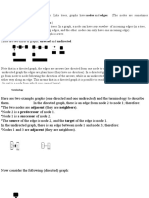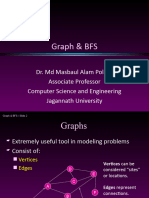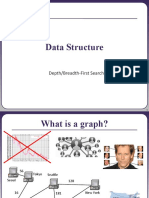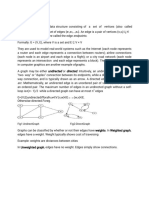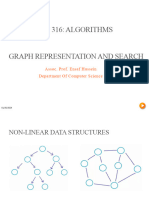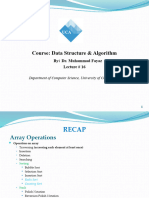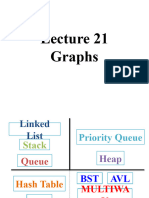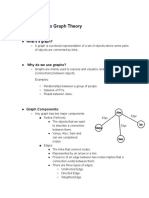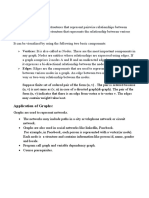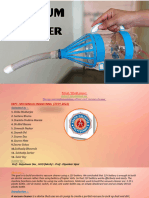0% found this document useful (0 votes)
96 views11 pagesAdvanced Graph Theory
The document provides a comprehensive overview of graph theory, detailing its fundamental concepts, types of graphs, traversal algorithms (BFS and DFS), and applications across various fields such as computer science and biology. It discusses matching in graphs, different representations, and specific paths like Eulerian and Hamiltonian paths. The conclusion emphasizes the significance of graph theory in modeling and solving complex real-world problems.
Uploaded by
wisololoCopyright
© © All Rights Reserved
We take content rights seriously. If you suspect this is your content, claim it here.
Available Formats
Download as PDF, TXT or read online on Scribd
0% found this document useful (0 votes)
96 views11 pagesAdvanced Graph Theory
The document provides a comprehensive overview of graph theory, detailing its fundamental concepts, types of graphs, traversal algorithms (BFS and DFS), and applications across various fields such as computer science and biology. It discusses matching in graphs, different representations, and specific paths like Eulerian and Hamiltonian paths. The conclusion emphasizes the significance of graph theory in modeling and solving complex real-world problems.
Uploaded by
wisololoCopyright
© © All Rights Reserved
We take content rights seriously. If you suspect this is your content, claim it here.
Available Formats
Download as PDF, TXT or read online on Scribd
/ 11
























